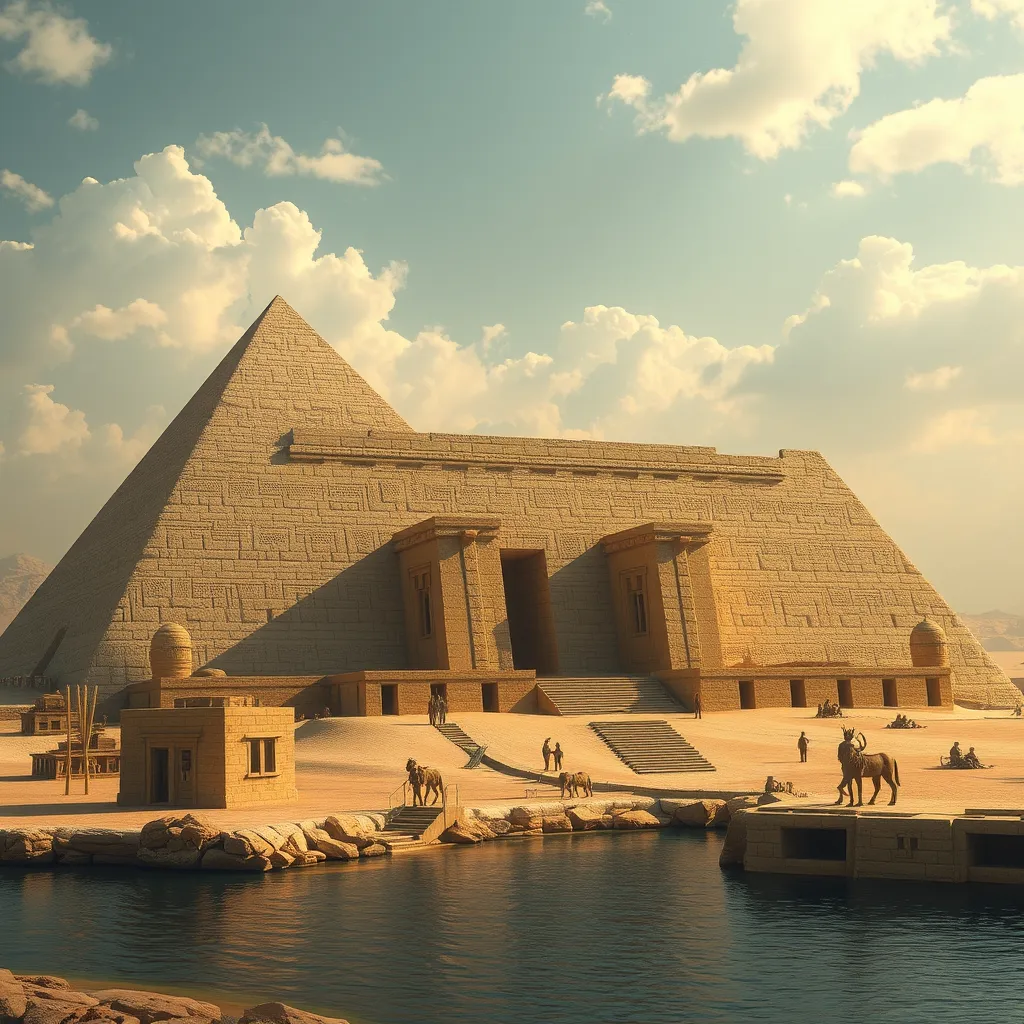The Duat: A Tapestry of Myths and Legends
I. Introduction
The Duat, in ancient Egyptian mythology, is often defined as the realm of the dead, a complex and mystical place where souls enter after death. It embodies not just a physical location but also a significant aspect of the ancient Egyptians’ beliefs about life after death.
Understanding the Duat is crucial in the context of the afterlife, as it reflects the ancient Egyptians’ views on mortality, judgment, and the eternal journey of the soul. This article focuses on the myths and legends associated with the Duat, exploring its historical context, geography, deities, and profound influence on art and literature.
II. Historical Context of the Duat
Ancient Egyptian beliefs about the afterlife were deeply intertwined with their religious practices and societal norms. The Duat was seen as a place where the deceased would undergo a series of trials and judgments before being granted eternal life.
The role of the Duat in funerary practices was paramount; elaborate burial rituals, including the use of tombs and grave goods, were designed to ensure a safe passage through this mystical realm. Over different dynasties, the depiction of the Duat evolved, reflecting changes in religious beliefs and artistic styles.
III. Geography of the Duat
The Duat is often described as a vast, dark landscape filled with rivers, caverns, and various realms, each symbolizing different aspects of the afterlife. Some of the notable regions within the Duat include:
- Fields of Aaru: A paradise where the souls of the righteous dwell.
- Lake of Fire: A place of punishment for the wicked.
- Islands of the Blessed: Sanctuaries for the souls who have passed the trials.
Symbolism is rife within these landscapes, representing the struggles and rewards that souls face. The Nile River holds significant importance in Duat mythology, symbolizing the cycle of life, death, and rebirth.
IV. Deities of the Duat
The Duat is populated by a variety of deities, each playing a crucial role in the afterlife journey. Key deities include:
- Osiris: The god of the afterlife, resurrection, and fertility, who presides over the judgment of souls.
- Anubis: The jackal-headed god responsible for mummification and guiding souls through the Duat.
- Ma’at: The embodiment of truth and justice, who weighs the hearts of the deceased against her feather of truth.
In addition to these well-known figures, there are lesser-known deities, such as Ammut, the devourer of souls, and Thoth, the god of wisdom and writing, who also contribute significantly to Duat mythology.
V. Myths and Legends of the Duat
Among the most notable stories associated with the Duat is the myth of Osiris, which details his murder by his brother Set, his resurrection, and his subsequent role as the ruler of the afterlife. This myth serves as a foundation for understanding the cycle of death and rebirth in Egyptian belief.
The journey of the soul through the Duat is fraught with trials. Souls must navigate through challenges, including encounters with hostile creatures and the weighing of their hearts. These trials symbolize the moral and ethical challenges faced during one’s life.
Symbolic interpretations of these myths often reflect broader themes of justice, order, and the hope for eternal life. The stories convey profound moral lessons about living a righteous life in preparation for the afterlife.
VI. The Weighing of the Heart
The judgment process in the Duat is famously depicted in the “Weighing of the Heart” ceremony. In this process, the deceased’s heart is weighed against the feather of Ma’at, representing truth and justice. The outcome determines the fate of the soul:
- If the heart is lighter than the feather, the soul is granted passage to the Fields of Aaru.
- If the heart is heavier, it is devoured by Ammut, resulting in eternal oblivion.
The significance of the heart is paramount, as it embodies the individual’s actions and morality during their lifetime. This myth carries cultural implications, promoting values of honesty, integrity, and accountability in ancient Egyptian society.
VII. The Influence of the Duat on Art and Literature
The artistic representations of the Duat in ancient Egyptian art are rich and varied. Tomb paintings and carvings often depict scenes of the afterlife, including the journey through the Duat and the Weighing of the Heart. These artworks serve both a decorative and functional purpose, intended to guide and protect the deceased in the afterlife.
The influence of the Duat extends beyond ancient times, permeating later literature and modern interpretations. Writers and artists have drawn inspiration from the mythological elements of the Duat, weaving them into contemporary narratives.
The Duat’s legacy can be seen in modern culture and media, where themes of the afterlife and moral judgment continue to resonate, reflecting a universal human fascination with life after death.
VIII. Conclusion
In recap, the Duat holds immense significance in ancient Egyptian mythology and culture, representing a complex interplay of beliefs surrounding death and the afterlife. The myths and legends associated with the Duat provide profound insights into ancient Egyptian values and societal norms.
These enduring myths invite reflection on the human experience, morality, and the quest for understanding what lies beyond life. As we explore ancient Egyptian beliefs, we uncover the deep influences they continue to have on our modern worldview.




